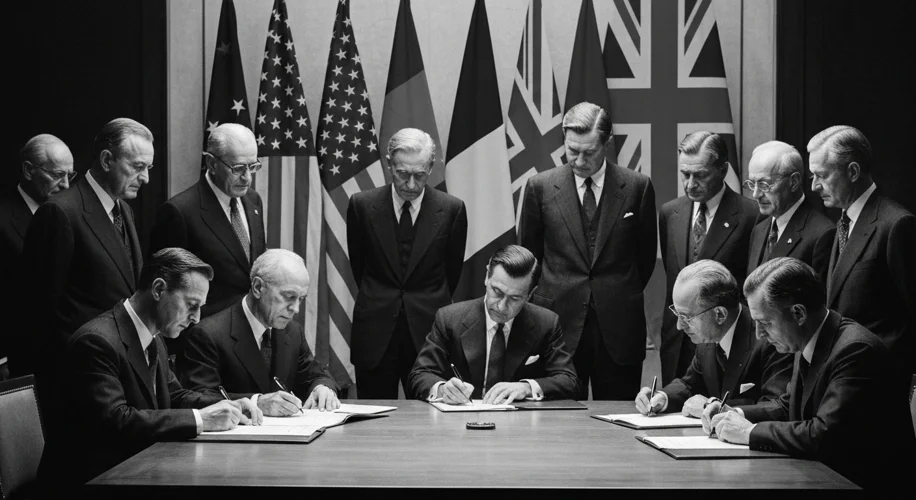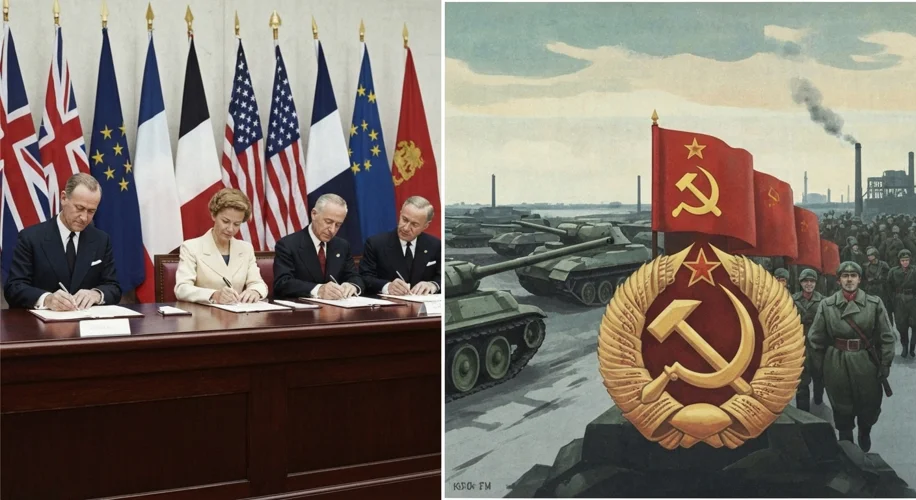The ashes of World War II had barely settled when a new, chilling division began to cleave the globe. Europe, ravaged and weary, found itself caught in the tightening grip of a bipolar world. On one side stood the triumphant Soviet Union, its red banner flying over Eastern Europe, and on the other, the United States and its Western allies, determined to contain the spread of communism. This ideological chasm, forged in the crucible of post-war geopolitics, would soon manifest in two formidable military alliances: the North Atlantic Treaty Organization (NATO) and the Warsaw Pact.
The seeds of this division were sown in the very victory that ended the war. The wartime alliance between the Soviet Union and the Western powers, a fragile unity against a common enemy, began to fray as soon as that enemy was vanquished. Joseph Stalin, the wily Soviet leader, viewed the devastated nations of Eastern Europe as a vital buffer zone, a shield against any future aggression from the West. He systematically installed communist regimes loyal to Moscow, tightening his iron grip.
Across the Atlantic, the United States and its European partners watched with growing alarm. The Truman Doctrine, announced in 1947, pledged American support to nations resisting communist subjugation. The Marshall Plan, a massive economic aid package, aimed to rebuild war-torn Europe and, crucially, to prevent economic instability from fostering communist movements. But as the geopolitical climate chilled, a purely economic response was deemed insufficient.
The breaking point, or perhaps more accurately, the formalization of the divide, arrived in 1949 with the signing of the North Atlantic Treaty. Twelve nations – Belgium, Canada, Denmark, France, Iceland, Italy, Luxembourg, the Netherlands, Norway, Portugal, the United Kingdom, and the United States – pledged mutual defense. Article 5 of the treaty, the cornerstone of the alliance, declared that an attack against one member would be considered an attack against all. This was a clear signal to the Soviet Union: aggression would be met with a united, and potentially nuclear, response.

The Soviet Union, however, did not stand idly by. For years, it viewed NATO as an aggressive, encircling force. The perceived threat escalated, particularly after West Germany joined NATO in 1955, a move that brought a former adversary directly into the Western military orbit. This action provided the Soviet Union with the casus belli it needed. In return, on May 14, 1955, the Warsaw Pact was signed, officially establishing a rival military alliance between the Soviet Union, Albania, Bulgaria, Czechoslovakia, East Germany, Hungary, Poland, and Romania.
The Warsaw Pact was, in essence, a mirror image of NATO, albeit one driven by Soviet dominance. It stipulated mutual defense and reinforced Moscow’s control over its satellite states. The pact formalized military cooperation, joint command structures, and the stationing of Soviet troops in member countries. It was a stark visual representation of the Iron Curtain, a continent divided into two heavily armed camps.
The ensuing decades saw the world live under the constant shadow of this military standoff. The Cold War, as it came to be known, was characterized by proxy wars, an intense arms race, and the ever-present threat of nuclear annihilation. NATO and the Warsaw Pact became the primary military instruments of their respective blocs. Their doctrines, troop deployments, and even military exercises were carefully calibrated responses to each other, each move met with a counter-move.
For ordinary citizens in these nations, life was shaped by this division. Families were separated by borders, and the constant specter of war influenced art, culture, and daily life. The military might of both alliances was a tangible reality, with vast numbers of troops and advanced weaponry deployed along the East-West German border, the most heavily fortified frontier in the world.
The impact of these alliances extended far beyond Europe. They shaped global politics, influencing conflicts and alliances in Asia, Africa, and Latin America. The non-aligned movement emerged as a third force, seeking to distance itself from the bipolar struggle. Yet, even this movement operated within the gravitational pull of the two superpowers.
The eventual dissolution of the Warsaw Pact in 1991, following the fall of the Berlin Wall and the collapse of the Soviet Union, marked the symbolic end of the Cold War. NATO, however, not only survived but expanded, incorporating many former Warsaw Pact members. This transformation reflects the enduring legacy of these mid-20th century military alignments – a testament to how geopolitical anxieties and ideological competition can redraw the maps of the world and shape the destiny of nations for generations.

